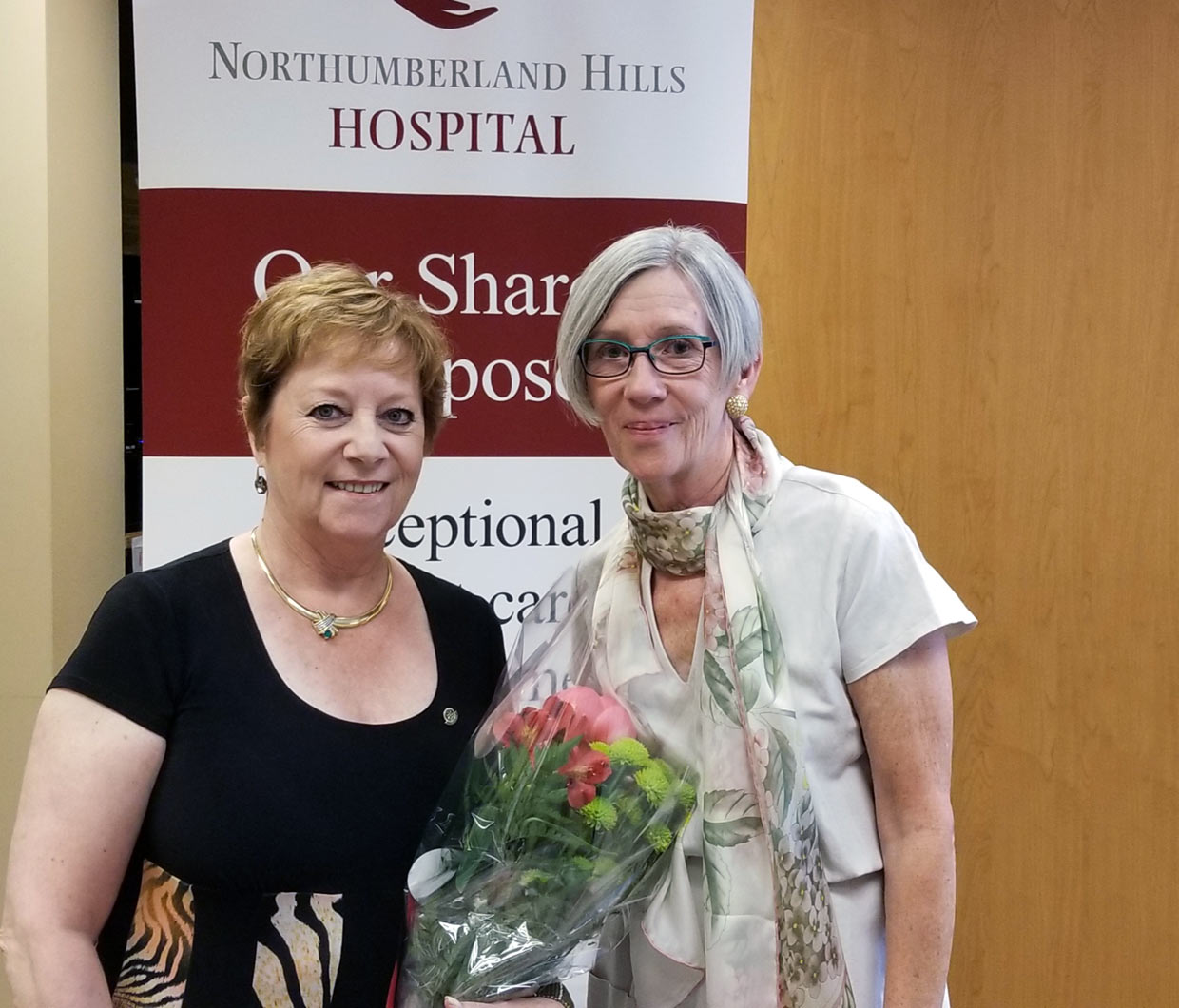AGM concludes 2018/19 fiscal year with third consecutive year with modest operating surplus - Pam Went to succeed outgoing Board Chair Elizabeth Selby

The Northumberland Hills Hospital (NHH) Board of Directors hosted its Annual Meeting on Tuesday, June 25th.
Chaired by Elizabeth Selby, who concluded her two year term as NHH Board Chair, the event, hosted in the hospital’s Peter B. and Mary T. Smith Community Education Centre, was attended by Board Directors, volunteers, donors, local partners and health-care providers, staff, physicians, area residents and local government representatives, as well as senior staff.
The keynote address featured three speakers who spoke, from the perspective of NHH and its partner Community Care Northumberland, on the continuum of palliative and end-of-life care services in Northumberland County.
Trish Baird, Executive Director of Community Care Northumberland (CCN), the agency responsible for Ed’s House - Northumberland Hospice Care Centre (now under construction in Hamilton Township) opened the keynote remarks with an overview of her organization’s current hospice care services, and the augmented supports that will come when Ed’s House, CCN’s new 10-bed, 18,000 square foot home for hospice services, opens in our region.
Dr. Francesco Mulé, NHH Service Lead, Palliative and Pain Management, spoke about the role of palliative caregivers like himself—either in hospital or in the community—in supporting individuals with a life threatening diagnosis.
“Once a diagnosis is made, that person’s world is rocked,” he said. “It’s our job as palliative clinicians to support by helping to develop a personalized plan that appropriately addresses suffering, and acknowledges crises.”
Traditionally, palliative care is considered the ‘last step,’ Dr Mulé noted, “But it’s our job as clinicians to change that mindset, because it is not right.” Not only am I treating the symptoms at end of life, I am—in many cases—helping an individual to manage living.”
Palliative care has many faces, he noted. What’s important to acknowledge is that there are considerable benefits to introducing it early, and taking a team approach.
Using a bowtie graphic to illustrate his point that the patient does not have to be dying before palliative care can be introduced, Dr. Mulé explained what happens when a serious diagnosis is made, and patients are given the option, in some cases, to “walk towards a cure” or, in others, control the diagnosis. One side of the bowtie involves the diagnosis phase, the other represents palliative care, with opposite ends of that care being survivorship or quality of dying.
Ideally, as soon as diagnosis occurs, the patient will be introduced to a palliative care team and resources to work with them and their loved ones to support either survivorship or, as the case may be, quality of dying.
Quoting Hospice Palliative Care Ontario, the third speaker, Cheryl McFarlane, CCN’s Regional Hospice Program Coordinator, pointed out that only three per cent of Canadians die suddenly. “97 per cent of us need help to live and die well with comfort, with meaning and with support for our caregivers.”
“Our deaths are social events,” McFarlane said, emphasizing that the Hospice services provided by CCN operate at “an intersection between health and social care.”
Using a flower icon to illustrate the depth and breadth of services available through CCN today, and the partnerships that help to support these, McFarlane explained the areas of focus for each of CCN’s ‘petals’, from volunteer visiting, to grief support and bereavement care, to psychosocial support, day hospice, caregiver support, integrated wellness, training and education and—new to the community in the past three years—an interdisciplinary palliative care community team (PCCT) which works in tandem with local partners, including NHH, to help patients with exactly what Dr. Mulé recommended: early engagement of a support team, pain and symptom management, and linkage to physician/primary care support.
